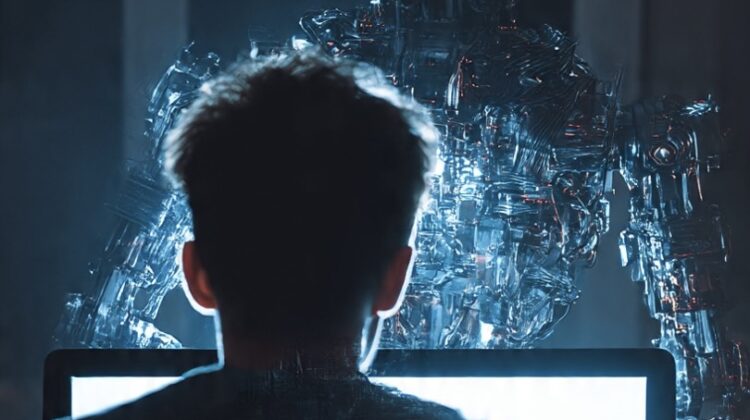
The Age of Intelligence: The Rise of A.I.
In every era of human history, a defining force has pushed civilization forward — fire, the wheel, electricity, the internet. Today, that force is Artificial Intelligence (A.I.). We are living in what many call The Age of Intelligence, a period where machines are not just tools but learners, thinkers, and creators in their own right. A.I. is transforming the way we work, communicate, and even imagine the future.
The Dawn of Artificial Intelligence
The concept of A.I. isn’t new. In fact, the seeds were planted as early as the 1950s when computer scientists like Alan Turing asked the question, “Can machines think?” Early A.I. research was basic — programs that played chess or solved math equations. Computers were slow, data was limited, and human imagination was far ahead of technology.
Fast forward to today, and A.I. has evolved beyond anyone’s expectations. Thanks to powerful processors, massive data sets, and cloud computing, machines can now recognize faces, generate art, translate languages, diagnose diseases, and even write essays like this one. What was once science fiction is now everyday reality.
How A.I. Thinks — The Science Behind the Magic
At its core, A.I. is built on algorithms — sets of rules and patterns that help computers “learn” from data. The most popular method today is called machine learning, where systems improve through experience. For example, an image recognition model can be trained with thousands of pictures of cats until it learns to recognize one on its own.
Then there’s deep learning, a more advanced branch inspired by how the human brain works. It uses neural networks with multiple layers to process information and make decisions. This is how self-driving cars can detect pedestrians, and voice assistants like Siri or Alexa can understand speech.
A.I. doesn’t truly “think” the way humans do — it doesn’t have emotions, consciousness, or intent. But its ability to process enormous amounts of information in seconds makes it incredibly powerful in problem-solving and prediction.
A.I. in Our Everyday Lives
You might not notice it, but A.I. already plays a role in your daily routine. When Netflix recommends a movie you’ll love, that’s A.I. When your smartphone corrects your grammar or filters spam emails, that’s A.I. too. Even your online shopping suggestions or map navigation routes are powered by intelligent systems learning from your habits.
In workplaces, A.I. tools automate repetitive tasks, freeing humans to focus on creative and strategic work. In healthcare, A.I. assists doctors in detecting diseases earlier and more accurately than ever before. In education, adaptive learning platforms customize lessons for every student’s pace and ability.
The impact is massive — and it’s only the beginning.
The Power and the Paradox
With great power, however, comes great responsibility. A.I. presents both incredible opportunities and serious ethical challenges.
One major concern is job displacement. Automation has already replaced millions of factory and clerical jobs, and many fear that creative professions could be next. Yet, history shows that every technological revolution also creates new kinds of work — jobs that didn’t exist before. The key will be learning to adapt and reskill.
Another issue is bias in A.I.. Because A.I. systems learn from data created by humans, they can inherit our prejudices. For example, a hiring algorithm trained on biased company data might unintentionally favor certain demographics. Ensuring fairness and accountability in A.I. design is one of today’s most urgent priorities.
Privacy is also at stake. Every app, camera, and digital assistant collects data — often without us realizing how much. Who owns that information? How is it used? These are questions society must address as A.I. becomes more intertwined with our lives.
The Rise of Generative A.I.
One of the most fascinating breakthroughs in recent years is Generative A.I. — systems capable of creating new content like art, music, code, or writing. Tools such as ChatGPT, DALL·E, and Midjourney have redefined what’s possible for both individuals and industries.
Writers use A.I. to brainstorm ideas or improve drafts. Artists use it to visualize entire worlds. Game developers design characters and levels in half the time. What once required entire teams can now be done by a single creator with the help of intelligent software.
However, generative A.I. also raises new questions about originality and authorship. If a painting or song is made by a machine, who owns it? The creator who typed the prompt or the algorithm itself? These debates will shape the future of art, law, and intellectual property.
A.I. and Humanity: Partners, Not Rivals
Despite the fears of machines “replacing” humans, the real goal of A.I. is not domination — it’s collaboration. A.I. amplifies human potential by doing what we can’t: analyzing vast data, detecting patterns, or automating tedious tasks. Meanwhile, humans bring something machines never can — empathy, ethics, creativity, and emotional intelligence.
Imagine an architect designing a city with A.I. optimizing energy use, or a teacher using A.I. insights to personalize learning. The partnership between human intuition and machine precision could solve problems far beyond our current reach — from curing diseases to reversing climate change.
The future isn’t about humans vs. machines but humans with machines.
The Future: Toward Artificial General Intelligence
Today’s A.I. systems are narrow — they specialize in one task at a time. But researchers are working toward Artificial General Intelligence (AGI) — a system capable of understanding and learning across any domain, much like a human brain.
The leap from narrow A.I. to AGI would be as monumental as the invention of electricity. Yet, it also carries risk. How do we control something that could one day surpass our intelligence? Tech leaders like Elon Musk and organizations such as OpenAI emphasize the importance of building safe and aligned A.I., ensuring it benefits humanity rather than harms it.
While AGI remains a theoretical goal, progress is accelerating faster than most people realize. Whether it arrives in 10 years or 100, one thing is clear: the Age of Intelligence will reshape our species forever.
Final Thoughts: Embracing the Age of Intelligence
A.I. is not just a trend — it’s the next stage of human evolution. Every click, every dataset, and every innovation moves us further into a world where intelligence is no longer bound by biology.
But this age also demands responsibility, wisdom, and humility. The more we teach machines, the more we must ask ourselves what it truly means to be human. A.I. reflects our values, our biases, and our creativity. It learns from us — for better or worse.
As we step deeper into this era, we must remember: Artificial Intelligence is only as good as the human intelligence guiding it.
So, whether you’re a tech enthusiast, a creator, or simply a curious mind — stay informed, stay ethical, and stay inspired. The Age of Intelligence has just begun, and we’re all part of the story.




